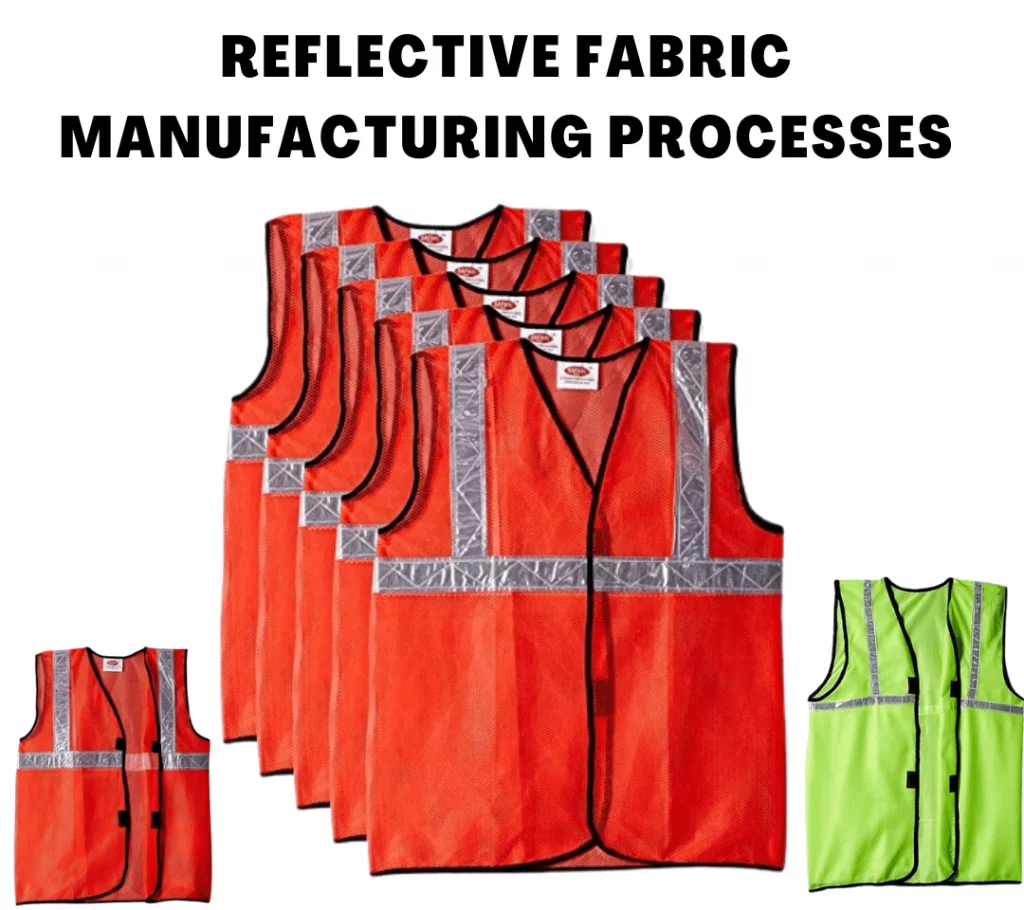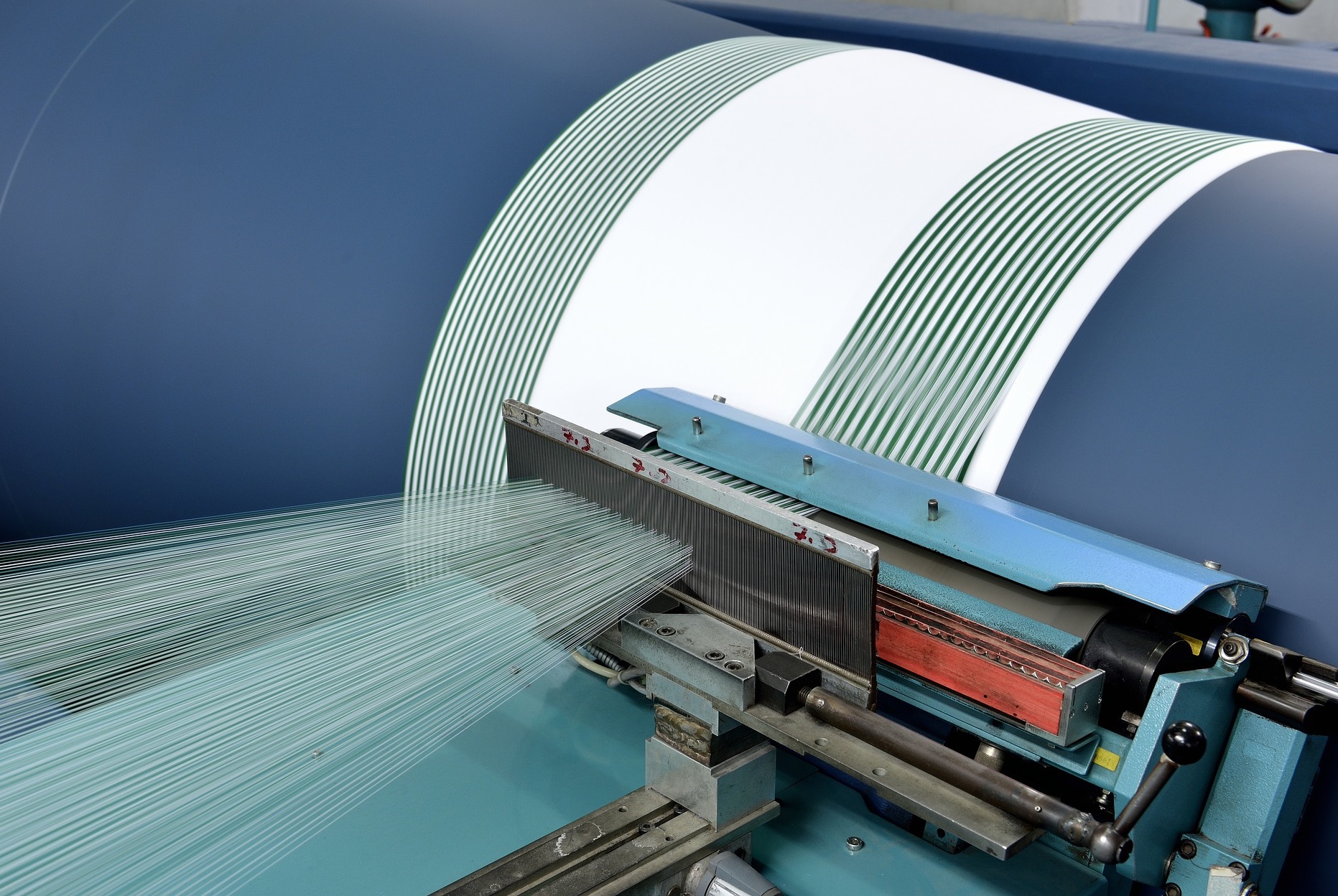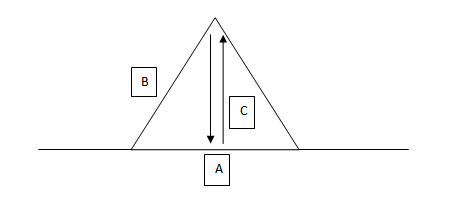In this article, we will cover the processes of reflective fabric manufacturing, including: How does reflective glass bead coating work?
Reflective glass bead coating techniques, and One coating, one processing method. These processes are critical to ensuring the safety of drivers and pedestrians in all areas of the world. We’ll also look at some of the benefits of reflective fabric. After all, it’s good to know what you’re getting before investing in reflective fabrics for your vehicle.
What is reflective safety fabric?
You’ve probably seen reflective safety fabric in sporting goods, costumes, or road work. While it might be hard to recognize in headlights, it is essential to be seen by drivers. High visibility cloth is available in different forms including vests and whole outfits. It also makes a great patch for various jobs. Civil service and military members, for instance, often wear reflective clothing in their uniforms. This type of cloth also has an advantage over plain black and white t-shirts and pants.
The material is often used for street signs and other road symbols. It also helps to keep athletes and construction workers visible to motorists. It also serves as an effective way to divide huge areas and mark them clearly at night.
This fabric is easily applied to clothing, and it also sticks to most surfaces. It has many uses, including safety and preventing accidents. It can also be used for advertising. You can cut the reflective fabric into logos or designs to attract potential customers.
HTV reflective materials use an elastic part called TPU. A polyester or spandex backing fabric serves as the initial layer. After that, an adhesive substance holds the reflective sheet crimp to the fabric.
Finally, high-quality reflective fabric uses glass beads and aluminum reflectors for the finishing touch. These beads reflect light in low-light conditions. Whether you’re looking for reflective safety fabric for your clothing or accessories, it’s important to be protected while working on the job site. High-quality workwear online is available in different forms including vests and whole outfits.
How does reflective material work?
The manufacturing process of reflective materials involves several steps. First, the materials are tested. In general, reflective tapes are tested for strength greater than 5N. A sample measuring 2.5 cm x 30 cm is flexed in half and placed on a tension clamp with the adhesive facing downward. The sample is then raised and lowered, and the adhesive’s strength is measured. It is also assessed for its washability. The reflective material is tested to meet ISO standards for durability and washability.
Reflective Fabric Manufacturing Processes
Reflective materials can be manufactured in various forms, including fabric, sheets, and tape. Some materials come in the form of hot-pressed vinyl sheets, while others can be sewn directly onto fabric. Their versatility extends beyond safety.
Many fashion designers use reflective fabric for clothing and other applications. The materials are also used in advertising, with logos or designs cut into them for more visibility. It is possible to find reflective clothing, shoes, and accessories in multiple colors.
Another type of reflective material is a fabric that is made from thousands of tiny glass beads. When sunlight hits the fabric, these beads reflect light back to the wearer, making them visible. 3M’s Scotchlite Silver Reflective Material is more than 1,500 times brighter than a standard white t-shirt. Some reflective fabrics are even water-resistant and resistant to environmental agents. Moreover, these materials are stronger and longer-lasting than ever.
Reflective Glass Bead Coating
The use of reflective glass beads in fabrics enhances their light reflectivity, but these materials also have disadvantages when it comes to garments. Conventional textile fabric manufacturing does not use laminating equipment, which adds to the overall cost of the production process. Glass beads are difficult to position on a piece of fabric, and when they are positioned in the wrong direction, they may not appear as reflective as desired.
One type of reflective glass bead coating is a monolayer composed of spherical glass beads 16. These glass beads are partially embedded in a carrier layer 14 and partially exposed above it. The reflective coating is applied around the beads and engages with the carrier layer 14.
It contains a binder layer 18 surrounding the glass bead particles, which are then covered with a thin film of a light-reflecting metal.
Another type of reflective glass bead coating involves the use of a pigment or a powder that contains a large number of tiny glass beads. A paint application can use up to five or six pounds of glass beads for one gallon of paint. The beads aren’t mixed with the paint and must be applied before the paint dries. In order to achieve optimal results, the reflective glass bead coating must be applied first.
One Coating One Processing Method
There are two basic methods of reflective fabric manufacturing. The first is known as glass bead coating. The process is performed by mixing a glass bead with an adhesive and applying the resulting paste onto a fabric. There are two main processing methods of glass bead printing, namely multi-channel and one-liquid. Both methods have their pros and cons. The advantages of the former are that they provide excellent reflective performance and are relatively simple to manufacture.
In contrast, the second process uses a retro-reflective yarn. The retro-reflective yarn is then applied with a transparent reflective ink to increase the overall performance and reflectivity of the garment. The reflective ink does not adversely affect the fabric’s performance.
However, it can be applied in thin layers, so that the garment will have a soft hand feel. The third method is known as invisible reflective printing.
This method can significantly increase the lifespan of reflective garments. Traditional reflective yarns are prone to erosion and abrasion along the edges, reducing their reflective properties. Encapsulating the retro-reflective yarns can extend the fabric’s life span and increase consumer confidence. Using a one-coating-one-processing method increases both the reflective properties and durability of the garment. The general schematic of the manufacturing process is shown in FIG. 1.
Bead Planting
Bead planting in the reflective fabric manufacturing process involves the placement of small beads that are magnetized. These beads are dispersed across a piece of fabric and are applied using a rotary or flatbed printing apparatus.
The reflective particles are dispersed by passing the fabric through a heat treatment to fuse the thermoplastic binder. The resulting fabric appears a bright, reflective white or silver. In many applications, a reflective fabric is an important part of a safety garment or a nighttime costume.
Dry final fabrics from Examples I-III contained 2.72, 3.07, and 4.09 grams of reflex-reflective particles per square yard. Federal Test Method Standard 370 requires a 0.2deg Observation Angle and -4.0deg Entrance. These fabrics retain a high degree of light reflectivity even after washing. The amount of reflective particles used during the manufacturing process varies but is generally a few grams per square yard.
Beads are commonly used as a decorative feature in clothing. However, they are also detrimental to a garment’s comfort and drapability. Additionally, they detract from the garment’s normal daytime visual appearance. During the daytime, glass beads will appear off-color or dingy. Beads that are positioned in a specific direction will not reflect the light in the correct direction.
Transfer Method
In one embodiment of the present invention, a reflective layer is formed on a substrate. A dye representing a pattern or color is applied to the surface of the reflective layer. The printed layer may include a glass bead or a water-soluble anionic polymer, micro prisms, or both. Such reflective fabrics may be suitable for use in display panels, safety clothing, and night work clothes. Listed below are some advantages of this transfer method.
The process of reflective fabric manufacturing varies widely. The visible print is the least reflective and is largely silver or grey in color. Some developments in this area incorporate color into the reflective ink, which reduces its reflective properties and inhibits airflow.
However, these methods do not have the inherent problems found in direct printing. Some reflective fabrics use dyes that contain dyes that have been pretreated to increase their color or reflectivity.
The process is similar to that used for dyeing, but with a few important differences. After removing the pigment layer, reflective particles are applied to the surface of the substrate.
After this, they are subjected to a suitable pressure that helps them bond with the second substrate. The solvent is then removed. This results in the formation of a network structure. During this process, the pigment layer and the water-soluble anionic polymer are fused together.
Hot Melt-back Coating
When it comes to the production of reflective fabrics, the hot melt-back coating is one of the most common techniques. The process is known as metallization and involves the application of inorganic material to a reflective fabric.
The material is usually made of polyester, which is chemically inert and resistant to insects and mildew. It is also extremely flexible and breathable, making it a viable option for a wide variety of applications.
The hot-melt back coating process is a great solution for the manufacture of reflective fabrics and clothing. This method makes it possible to heat metals to temperatures well above their boiling point, allowing for the production of highly reflective films.
The process is also safe for the environment, and hot melt film coating is often stronger than the traditional sewing method. It also improves the overall texture of a material. In addition, it also prevents oxidation.
Several variations of the technique were developed to make sure the coating was applied evenly. The primary coating roll was dipped into a trough of liquid. The secondary roll had a doctor blade on its side that transferred a predetermined amount of liquor onto the fabric. This was the first process for coating fabric. The other method of applying the material is called knife coating. The process is a multi-step process involving two phases: raw fabric, primary coating, and post-treatment.
In reflective fabric manufacturing, there are several processes that need to be completed in order to create a finished product. The most common methods include bead coating, one coating one processing, bead planting, and transfer method. While the melt-back process is less popular, it can be used to create unique fabrics with interesting textures. What’s your favorite type of reflective fabric?




